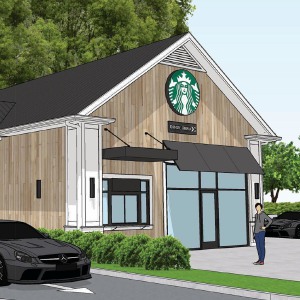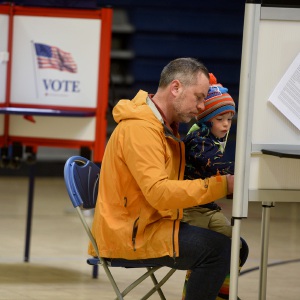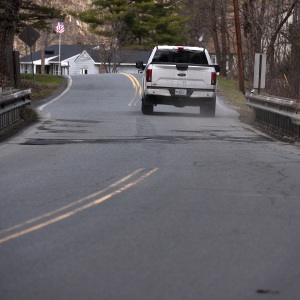Upper Valley banks offer assurances that they’re safe
| Published: 04-01-2023 4:23 PM |
Upper Valley banks want to make one thing clear: they are not like Silicon Valley Bank.
The collapse of the California bank, which was closely aligned with the tech industry, and of the New York-based Signature Bank, which catered to cryptocurrency investors, sent tremors through the banking economy and triggered questions from the public about the safety of their money.
But there is no need to stuff your money in the mattress, according to the leaders of the Upper Valley’s community banks.
The business of Silicon Valley Bank and Signature Bank and how they operated were a far cry from that of the Upper Valley’s prosaic community banks, where most people keep their checking and savings accounts or borrow money to buy homes or finance small businesses, local bankers said.
“We are all painted with the same brush, but we are incredibly different,” said Kathy Underwood, CEO of Ledyard National Bank and treasurer of the Independent Community Bankers of America, a trade organization of community banks. As a tiny bank with $575 million in deposits — Silicon Valley Bank had $175 billion in deposits — “we generally do not stretch outside our market or into products that we don’t understand,” she said. “We have a very focused risk model.”
But Upper Valley bank customers still could be affected by the collapse of SVB and Signature as fallout spreads through the industry and government in reaction requires new parameters for banks, regardless of their size and soundness.
For example, federal regulators may force some banks to pony up more into the insurance fund to rescue failed banks, a move that would likely lead community banks to pass along those higher “assessments” to customers by increasing the interest rate on home mortgages and business loans or raising transaction fees.
“The money will have to come from somewhere,” said Reggie Greene, CEO of Claremont Savings Bank, about the increased burden that could be applied to all banks to fund the banking industry’s insurance reserves. “A $100,000 increase in our assessment would not be an insignificant hit for us. We’d have to pass that on.”
Article continues after...
Yesterday's Most Read Articles
 Starbucks store planned for Route 120 at Centerra
Starbucks store planned for Route 120 at Centerra
 Enterprise: Upper Valley pet sitters discuss business growth, needs
Enterprise: Upper Valley pet sitters discuss business growth, needs
 A Life: Priscilla Sears ‘was bold enough to be very demanding’
A Life: Priscilla Sears ‘was bold enough to be very demanding’
 2024 Upper Valley high school baseball guide
2024 Upper Valley high school baseball guide
 Canaan Elementary School has new principal
Canaan Elementary School has new principal
(The Federal Reserve signaled this past week that it may exempt community banks from stricter capital requirements and the higher assessments it wants to impose on big banks because the community bank system is well capitalized and stable and smaller banks should not have to pay for the risky failed bets of big banks).
In addition, Mascoma Bank CEO Clay Adams said, going forward it is “likely that banks will be careful about how they handle their liquidity needs,” which “could lead to tighter lending” — making loan qualifications tougher, or the terms of the loan more expensive — which would put a damper on business and consumer spending.
That could curtail the economy more than was anticipated by the Federal Reserve Bank, which has been raising a key interest rate for more than a year in an effort to combat price inflation.
“Prior to these bank failures there was a lot of talk about a ‘soft landing’ for the economy where the (Federal Reserve) was able to increase rates to reduce inflation without having the economy go into a recession,” Adams explained. “Given what has happened the past few weeks there is probably greater likelihood of a ‘hard landing.’ ”
The Upper Valley is home to five independent community banks — seven if branches of Maine’s Bar Harbor Bank and Trust and Vermont’s Northfield Savings Bank, which operate local branches, are counted. Some of the banks have roots in the 19th century and have weathered the Great Depression of the 1930s, inflation and stagflation of the 1970s, the savings and loan scandal of the 1980s and the implosion in the mortgage industry and Great Recession of 2007 to 2009.
Although there is no technical definition of “community bank,” the term typically refers to banks with assets of $10 billion or less and which principally utilize money from depositors — the vast majority in one geographic area — by plowing it back into the community in the form of home mortgages and business loans, according to Underwood.
The five Upper Valley banks range in size from Sugar River Bank, which has six branches and $382 million in total assets, to Mascoma Bank, which has 32 branches and $2.7 billion in assets. (In banking, loans to customers are counted as assets whereas customers’ deposits are counted as liabilities).
Banks earn revenues from the interest they charge on those loans, interest income from U.S. Treasury notes and transaction fees charged to customers.
If a bank is managing its risk exposure properly, the interest it earns on its loan portfolio exceeds the interest it pays on government securities, a difference known as a “spread.”
“The current turmoil in the banking industry is very different than what we saw in 2008,” Adams said. Back then, he said, the issue was “credit quality: bad loan decisions coming home to roost. Even then, this was not as much of a problem in our region.”
But today “credit quality for Mascoma and every bank I know of in northern New England remains very, very strong with delinquencies still at historically low levels,” which he said is aided by community banks in the region having “diverse loan portfolios that are not overly concentrated in any one industry or loan type” along with a “diverse deposit base.”
The problems at SVB and Signature were specific to those banks, according to Stephen Ciccone, an accounting professor and chairman of the department of accounting and finance at the University of New Hampshire.
For starters, he pointed out, more than 90% of the deposits at both SVB and Signature were not insured, meaning they exceeded the Federal Deposit Insurance Corporation’s $250,000-per-account insurance cap.
“These were very different banks,” Ciccone said. “For a local bank that’s smaller, you are looking primarily at customers who are going to be people in the region or small businesses. Most of those accounts are going be well under $250,000.”
(FDIC insurance covers up to $250,000 per depositor for each account category — savings, checking, retirement, etc., so a depositor could have more than $250,000 across multiple accounts at a single bank which would be covered).
The reason for the high level of uninsured accounts at SVB and Signature was due to their high-growth strategy in targeting tech industry start-ups and crypto fans, respectively, who used those banks to hold the money they needed to run their businesses.
Most Upper Valley banks report upward of 80% of their customers’ money in deposit accounts is insured: the lowest is Claremont Savings Bank at 65.31% and the highest is Woodsville Guaranty Savings Bank at 90.05%, according to FDIC bank reports.
But Claremont’s Greene said the percentage can be misleading because it measures the percentage of the total deposit money at the bank held in accounts in excess of the $250,000 insurance cap and does not distinguish between accounts that hold a few thousand dollars above the $250,000 from those that hold significantly more than the cap.
In theory, at least, the bulk of the uninsured deposits at a bank can be held by only a few accounts.
“It all gets put in the uninsured bucket even if only a portion is not guaranteed,” Greene said, adding that by the bank’s own estimate about 90% of its depositors have fully insured accounts.
Although the country’s second- and third-largest bank failures in March fed fears that a national bank run could be in the offing, Upper Valley bank leaders report that they saw barely anyone pull their money out.
“We had a couple of smaller customers, whose deposits were $10,000 to $15,000, take their money out because they thought the whole banking system was going down,” Greene said, adding Claremont also picked up a depositor who was actually spooked by assurances provided by their previous bank.
“We had very, very few inquiries, less than a handful,” from customers asking about their money, Ledyard’s Underwood said.
“We actually received fewer inquiries than I would’ve thought,” said Mascoma’s Adams.
Both Adams and Underwood said emails that their banks sent to customers in the wake of SVB’s and Signature’s collapse that explained how customer deposits are insured by the FDIC probably helped to ease customer fears.
The banks also noted that they offer products to insure deposit accounts that exceed $250,000, should the customer want it.
“Our team was proactive in reaching out individually to larger customers whose deposit balances exceeded the FDIC threshold and communicating more broadly with all customers,” Adams explained. “It was also important to communicate very clearly with our employees throughout the past few weeks so they, in turn, could help answer customer questions.”
Ledyard’s Underwood said people should be aware that not all of the ways in which they “bank” their money have the same level of protection as an FDIC-insured bank account. She cited the growing “fin-tech” sector, which includes digital payment apps like Venmo and store value cards, both which are especially popular among younger people.
The digital platforms and cards require users to pay into an account upon which payments are drawn, although those accounts are not insured by the FDIC.
If something were to happen to threaten the viability of the platform or the financial institution that sponsors the store card, the user could lose their money.
“The banks that people should be concerned about is where your money sits outside the banking system where there is no coverage,” she said. “That’s the risk.”
Contact John Lippman at jlippman@vnews.com.

 Hartford voters approve school budget and building repair bond
Hartford voters approve school budget and building repair bond City plans to widen and replace bridge on Trues Brook Road
City plans to widen and replace bridge on Trues Brook Road
